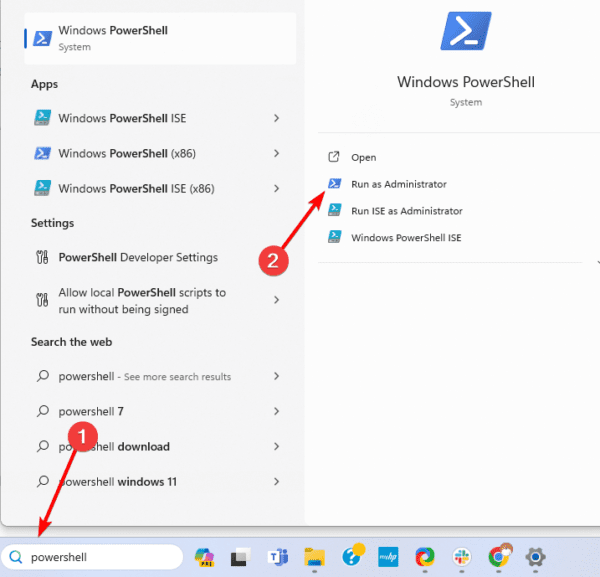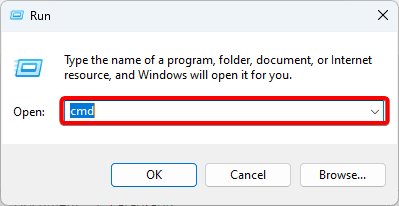On Windows 11, you probably have to run different commands at different times for various reasons. Some may be simple administrative commands, and others may be for troubleshooting. Regardless, you may want to send the command result to a file.
This guide uses the Command prompt and Powershell to explore the most effective way to send a command output to a file. Let us get right into it.
Save A Command Output File With PowerShell
To save the output file on PowerShell, follow the steps below:
1. Click the magnifying lens on the Taskbar, type powershell, and click the Run as Administrator option.

2. Type the command below to save in a text file and hit the enter key. Replace Your-Terminal-Command with the actual command you mean to run, and your-actual-file-path.txt, with the file path and name of the txt file.
Your-Terminal-Command | Out-File -FilePath your-actual-file-path.txt
3. Optionally, you may view the saved content by typing the command below and hitting Enter:
Get-Content -Path your-actual-file-path.txt
Save A Command Output File With Command Prompt
If you need to save the output file on Command Prompt, follow the steps below:
1. Press Windows + R to open the Run dialog.
2. Type cmd and hit Ctrl + Shift + Enter to open the Command Prompt with elevated rights.

3. Type the script below and hit Enter, replacing Your-Terminal-Command with your actual command and your-actual-file-path.txt with your text file’s full path and name.
Your-Terminal-Command > your-actual-file-path.txt
4. Optionally, you can save the output and view the result on the screen with the command below.
Your-Terminal-Command > your-actual-file-path.txt | type your-actual-file-path.txt
FAQ
It is very beneficial because it lets you save and capture results for commands that have been executed, and it would be suitable for analysis. It may also be very helpful for troubleshooting and documentation.
On the command prompt, you should use the > operator. This operator will overwrite the content of the file you are sending output to.
Sending Terminal Outputs
That is about as much as we share on sending terminal outputs. The methods are very efficient on the Command Prompt and Microsoft PowerShell.
Please let us know in the comment section how effective these commands have been for you.

